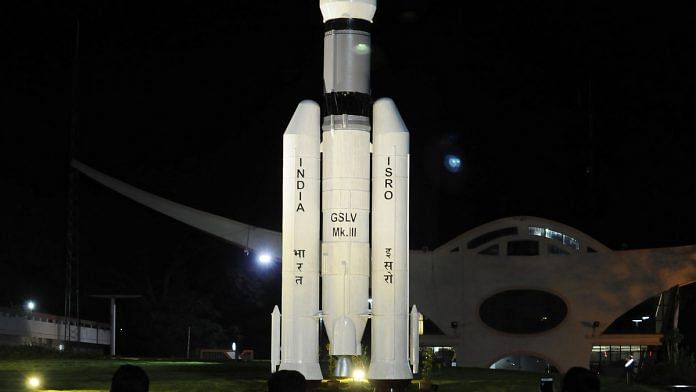Berlin: Satellites are excellent tools for access to democratised information, removing the bias in data collection and dissemination that often slips in with the involvement of human beings.
For example, satellite data has been used to independently determine the damage done by wars in Iraq and the Yemen, map poverty, etc.
The Indian Space Research Organisation (ISRO) operates one of the largest fleets of satellites, which are equipped with various types of cameras and microwave radars that help gather crucial data in various resolutions and wavelengths, be it day, night or cloudy.
The satellite data repository of ISRO is over three decades old, starting with IRS-1A to the latest Cartosat-2F.
This massive repository holds a wealth of insights for policymakers and other potential users, especially because it gives an unprecedented time series comparison where one can visualise the changes over an area of interest.
Satellite data has deep potential across a range of sectors, including natural resources management (e.g. land, water, air, etc), infrastructure monitoring, and climate change.
IBM, for example, has put out a case study on how satellite data has been used to aid 80 rescue missions in flood events.
However, despite the availability of this wealth of data, policy solutions proposed and implemented in India still do not utilise it to full potential.
The power of fusing multiple data sources
It was in recognition of satellite data’s many uses that ISRO set up Bhuvan as a national Geospatial Information Services (GIS) portal. However, it is mostly being used by governmental institutions as a visualisation tool.
A 2015 review of Bhuvan, conducted by the National Institute of Advanced Studies (NIAS), pointed out that a “national GIS cannot be a collection of whatever map/image data is available and act just as a visualisation and display tool for the Indian satellite images and data-bank/repository data and does not offer integrative/analytical GIS applications as decision support for users – governance, academia, industries or citizens”.
“Bhuvan design needs to considerably improve and reliability/robustness has to enhance with good testing and use of standards,” the NIAS added.
Policymakers in India need to realise that the scope to absorb insights from geospatial data goes much beyond. For example, SatSure, a Bengaluru-based start-up, aided in rescue efforts during the 2018 floods in Kerala by generating hotspots of the most-affected people. They did so by combining satellite data with weather data, 3D terrain models, census data and mobile traffic records.
It is important to realise that the insights generated by satellite data alone will almost always be limited when compared with those generated via multiple data sources.
In the case of Kerala floods, using satellite data with other sources helped make rescue efforts more efficient.
Required — an open-data platform for social change
Given the size and scale of agriculture and other major sectors in India, it would almost be impossible for one institution like ISRO or one department alone to have the ability to reach the last mile.
Realising as much, major space-faring nations such as the United States and even Japan and China have adopted cloud-based satellite data dissemination platforms to help entrepreneurs, NGOs, academic institutions, etc, gain open and free access to satellite data.
For example, the Bill and Melinda Gates Foundation is helping the poorest farmers in Sub-Saharan Africa by allowing them to monitor crops on a daily basis. All through satellite data.
If our society really has to tap technology for social change, policymakers in India need to revisit their current strategy and tailor a platform model that will allow seamless access to satellite data.
After the Bhuvan review, the NIAS suggested a dedicated effort to make data from India’s satellites easily, and non-discriminatorily, available to everybody. It is high time policymakers realised the cost of not heeding the recommendations.
Clapping with one hand
The power of satellite data is currently leveraged by departments such as agriculture to figure out the total amount of fertile land, barren land, crop area and yields.
These are useful to understand the state of food security as well as farmer welfare, given that Indian agriculture is still heavily monsoon dependent.
However, one could argue that the information extracted in this exercise is not being deployed in service of the larger agri-supply chain ecosystem.
For example, there is now evidence that satellites and other data sources can help conduct an independent assessment of the creditworthiness of small and marginal farmers, as well as insurance payouts.
Satellite data can be used to determine the pattern of yields in a given piece of area — for example, how much crop was harvested there over a certain period. This then can help build credit lending/risk models and facilitate the financial inclusion of small and marginal farmers.
The broader impact of adopting such a data-driven solution is the social change it creates.
Deploying satellite-drawn data for farm loans will keep a farmer applicant’s personal credentials from skewing loan applications, since creditworthiness will be assessed on the basis of harvests from his/her land.
Banks can anonymise the personal details of an applicant, which can significantly remove artificial barriers due to gender and class, reducing the transfer of human bias into intelligent data systems. Thus, the impact yardstick moves from high-level policy directives to grassroots-level social change.
Ultimately, satellites are tools that help society. Celebrating the success of placing them in orbit — without tapping their full potential — is akin to trying to clap with one hand.
Narayan Prasad is the host of the NewSpace India podcast, a bi-weekly talk show that exclusively discusses space activities in India.




Very true. Hardly few know that such audit has happened by NIAS. And face of the poor and needy , who needs except in introduction part of an article?